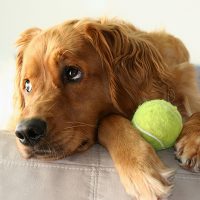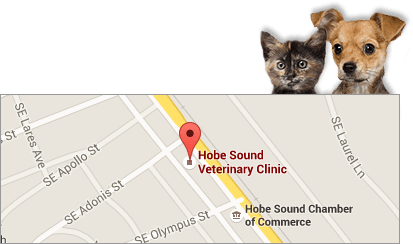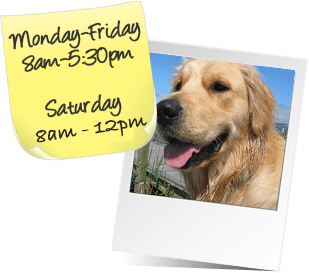Choosing the right toys for your dog is essential to their health, happiness, and overall development. Knowing how to choose dog toys can make a big difference in keeping your pup entertained and mentally stimulated while avoiding potential hazards. Not all dog toys are created equal—what works for one dog might not be suitable for another. When selecting toys, factors like your dog’s size, breed, chewing habits, and age all come into play. Toys that are too small can pose choking risks, while overly soft toys might be quickly destroyed by aggressive chewers. This guide will walk you through important considerations to keep in mind so you can pick the safest and most engaging toys for your dog. By following these tips, you’ll ensure that playtime is not only fun but also safe and beneficial for your furry friend.
Does your canine buddy sometimes run up to you holding his favorite toy? Fido has a pretty adorable way of asking you to play with him! Playing is actually great for your pet. It keeps him active, offers him beneficial mental stimulation, and lets him spend time with his favorite human: you. However, doggy toys are not one-size-fits-all. A vet offers some tips on choosing your pup’s playthings below.
Age
When figuring out how to choose dog toys, one thing you’ll need to keep in mind is Fido’s age. If your furry friend is still a young puppy, he’ll need soft toys to avoid hurting his sensitive teeth and gums. Once the little guy starts teething, durable chew toys will become essential. As your pooch grows into adulthood, he will need toys that keep him active, entertained, and out of mischief. Treat-dispensing toys, Frisbees, and puzzle toys are great choices for energetic adult dogs. If your canine pal is a senior, he may prefer treat toys or a cozy plush toy. For older dogs with diminished senses, toys that make noise or light-up toys can be helpful, keeping them engaged and happy.
Size
Consider Fido’s breed and size. Bigger dogs can break or rip toys easily, so they need tougher, more durable playthings than a smaller pup would. Larger dogs can also choke on toys made for puppies or little pooches. Small dogs, on the other hand, can injure themselves on toys that are too big.
Lifestyle
When deciding how to choose dog toys, keep your schedule and lifestyle in mind. If you often play with your furry buddy at night, opt for toys that glow or light up. If Fido enjoys burying things, select durable toys that can withstand your four-legged pirate’s treasure-hunting adventures. To keep your dog entertained when left alone, consider interactive toys that provide mental stimulation and keep them occupied during your absence. Choosing the right toys based on your dog’s habits and your routine will ensure they stay happy and engaged.
Safety
Always put safety first. Choose toys that are durable, and won’t easily rip or break. This is sometimes a problem with plush toys and stuffed animals. Fido could hurt himself if he swallows a squeaker or stuffing. If your canine companion has any aggressive tendencies, or is a bit rowdy, skip the rope toys and tug toys. Some dogs get a bit too into playing Tug-O-War, and can get really riled up. This can be dangerous, especially with larger dogs. Ask your vet for more information.
How to Choose Dog Toysvin 2024: Benefits and Safety
What are the different categories of dog toys?
Dog toys can be categorized based on age, size, and lifestyle needs. For puppies, soft and teething toys are essential. Adult dogs benefit from toys that promote activity and mental stimulation, such as puzzle toys and Frisbees. Senior dogs may prefer treat-dispensing or plush toys, with options like noise-making toys for those with poor vision or light-up toys for deaf dogs. Larger dogs need durable, tough toys, while small dogs require appropriately sized ones to avoid injury. Interactive and glow-in-the-dark toys cater to different playtime preferences and safety considerations.
How can dog toys help with training and behavior?
Dog toys play a crucial role in training and shaping a dog’s behavior by providing mental stimulation and physical activity, which helps curb boredom and destructive tendencies. Interactive toys, such as puzzle or treat-dispensing toys, engage dogs’ problem-solving skills, encouraging focus and patience. Chew toys can help alleviate teething discomfort in puppies while reducing inappropriate chewing on household items. Toys can also be used to reward positive behavior during training sessions, reinforcing commands. Additionally, toys that promote active play help redirect energy, preventing behavioral issues like excessive barking or aggression.
How can you make old toys seem new to your dog?
To make old toys seem new to your dog, rotate them regularly, so they don’t get bored with the same ones. Hide some toys for a few weeks, then reintroduce them later, as this can rekindle your dog’s interest. Adding a fresh scent by rubbing a small amount of dog-safe flavoring, like peanut butter or chicken broth, can make old toys more exciting. Additionally, interactive play, such as stuffing toys with treats or using puzzle toys, can mentally stimulate your dog, making the toy feel like a new challenge.
What scientific research has been done on dog toy preferences?
Scientific research on dog toy preferences has primarily focused on factors such as texture, size, shape, and interactivity. Studies indicate that dogs prefer toys that resemble prey, like those that are soft and squeaky, mimicking small animals. Research also shows that dogs favor toys that engage them mentally, such as puzzle toys, which can reduce boredom and stimulate problem-solving abilities. Age and breed influence preferences as well, with younger dogs favoring chew toys and seniors preferring softer, easy-to-manipulate options. Safety and durability remain key in choosing appropriate toys.
What materials should be avoided in dog toys?
When selecting dog toys, avoid materials that are easily breakable or pose choking hazards, such as soft plush toys with squeakers or stuffing. These can be dangerous if swallowed, causing blockages or injuries. Rope and tug toys should be skipped for dogs with aggressive tendencies, as they can become overly excited and risk injury. Additionally, toys made of weak or easily destructible plastic should be avoided for larger breeds that may chew through them quickly, potentially ingesting harmful pieces. Always prioritize durable, non-toxic materials to ensure safety.
Please contact us, your vet clinic in Hobe Sound, FL, for all your dog’s veterinary care needs. We’re here to help! For comprehensive pet health care, including Veterinary Wellness & Pet Vaccinations, our team is ready to assist you in keeping your furry friend healthy, happy, and well-entertained.




